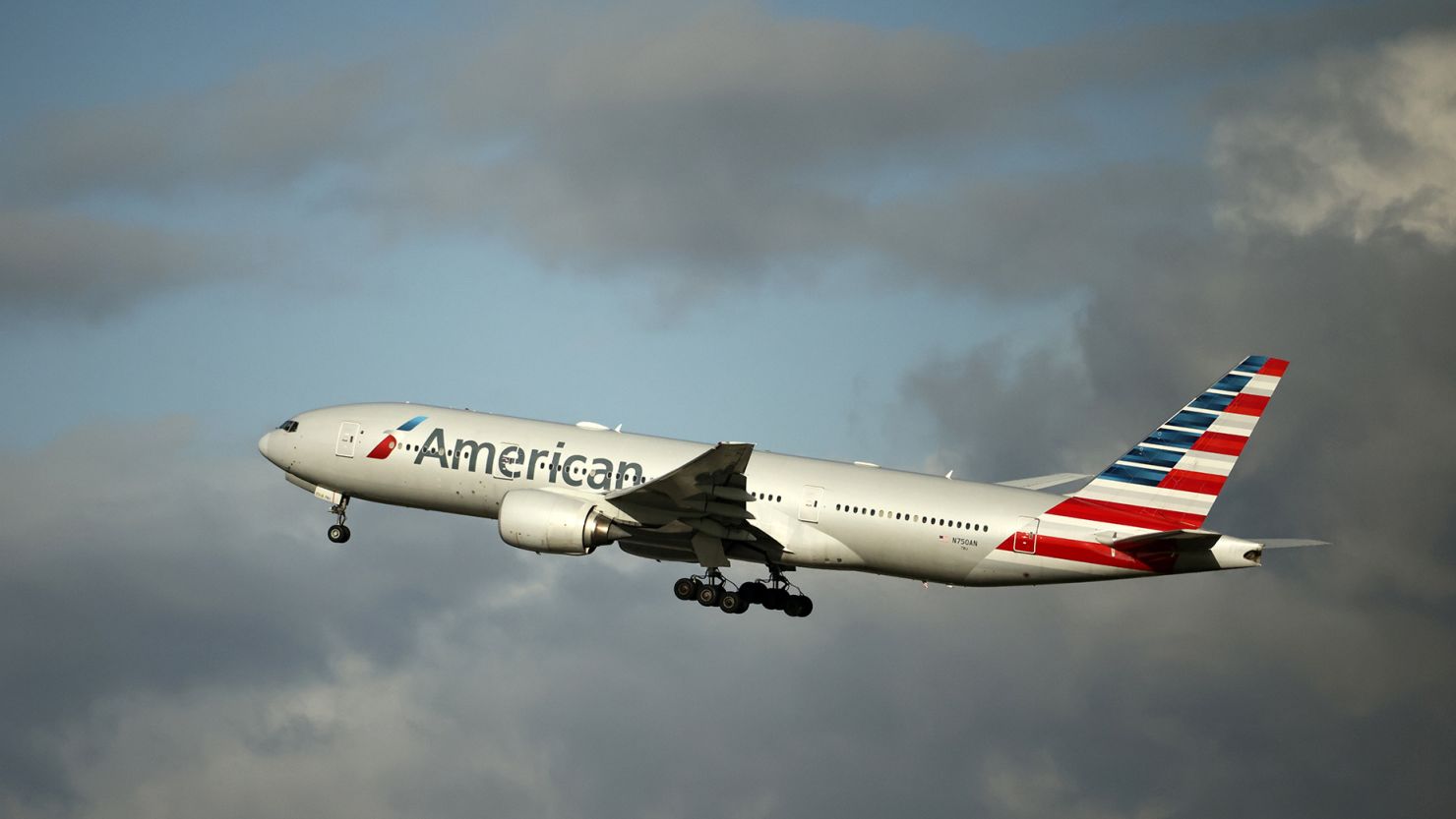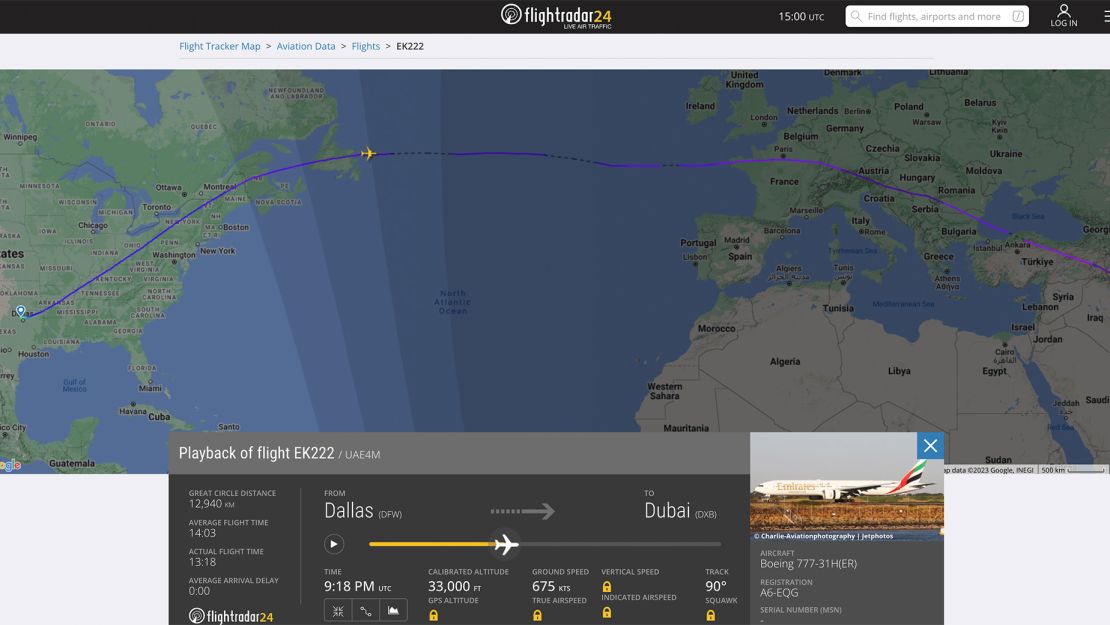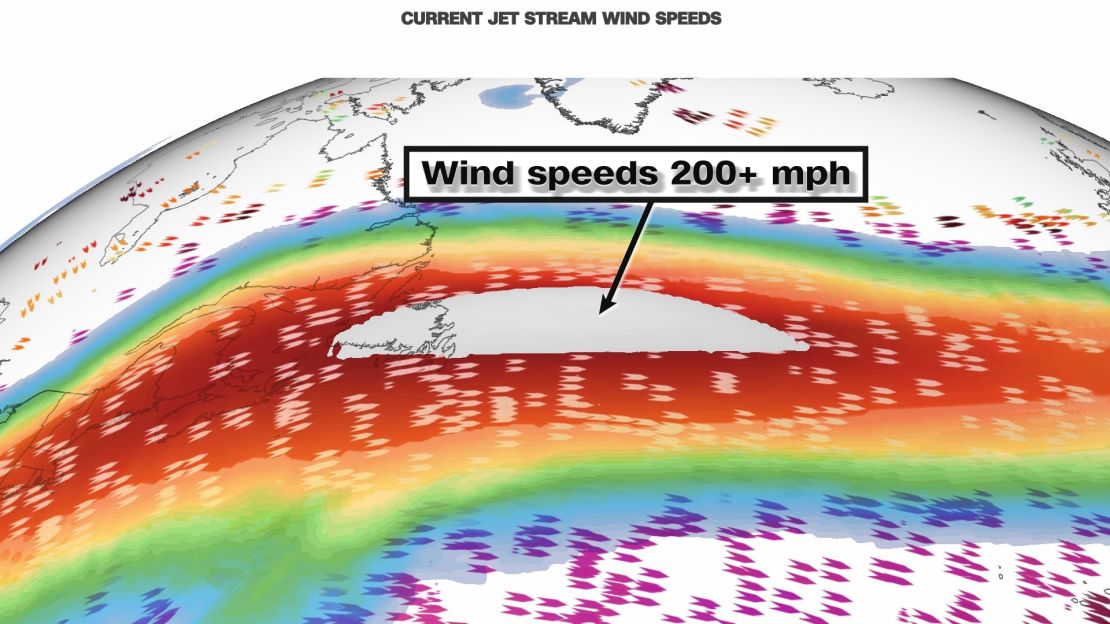Transatlantic airplanes are flying at the ‘speed of sound’ right now. Here’s why

But it’s working especially hard for travelers in
economy class right now, with the jet stream over
the Atlantic so strong that flights heading from the
US to Europe are reaching speeds equivalent to that
of sound.
Sound travels at about 761 mph or 1,100 feet per
second in “sea level standard conditions,” according
to NASA – a little over 661 knots.
In the past 24 hours, passenger aircraft traveling
east from the US across the Atlantic have reached
up to 778 mph. That’s a little over 200 miles per
hour faster than normal cruising speeds.
But if you’re thinking these flight times are a match
for the much-missed Concorde, whose sonic
booms used to mark it breaking the sound barrier,
it’s time to think again. There’s a difference
between ground speed and speed in the air
(indicated air speed, essentially the speed of the
plane in relation to the air around it). These
passenger flights, however speedy, didn’t break
the sound barrier.
But they did slash flight times. Emirates flight 222
from Dallas to Dubai arrived 57 minutes early on
November 1, having reached a top speed of 675
knots, or 777 mph, off the coast of Newfoundland,
according to flight tracking site Flightaware.

American Airlines flight 106 from JFK to Heathrow
arrived 54 minutes early on Wednesday morning,
with a flight time of just six hours and seven
minutes. It reached a top speed of 778 mph, or 676
knots, also just past Newfoundland.
Meanwhile Delta flight 186 raced from Los Angeles
to London with top speeds of 760mph, arriving half
an hour early on November 1 at 1.08 p.m.
A KLM cargo plane which took off nearly four
hours late on November 1 was due to arrive just
under two hours late, traveling from Miami to
Amsterdam.
The jet stream explained
The jet stream is a “core of strong winds around
five to seven miles above the Earth’s surface,
blowing from west to east,” as the UK’s Met Office
describes it.
It’s the reason why eastbound flights tend to be
shorter than westbound ones – with long haul
flights racking up time differences of an hour or
more, depending on the direction of travel.
Seven miles above the planet’s surface is
equivalent to around 37,000 feet – which means
that aircraft at cruising altitude slip easily into the
jet stream.
And it’s the rapidly cooling weather stateside this
week (now heading to Europe in the form of
Storm Ciaran) that’s responsible for the speeding
up of the winds, according to CNN meteorologist
Sara Tonks.
“This week’s burst of cold air in the United States
has upped the difference in temperature between
the United States (cold!) and the Atlantic Ocean
(warm!),” she says.
“This increase in the temperature gradient is
amplifying the speed of the jet stream, which is
driven by temperature differences.
“The jet stream is expected to help strengthen
Storm Ciaran, a low pressure system and potential
bomb cyclone that is expected to arrive in
Europe tonight [Wednesday].”
CNN meteorologist Derek Van Dam added:
“Remember, ground speed is how fast an airplane
is traveling, relative to a fixed point on the ground
versus airspeed which is the speed of an aircraft
relative to the air through which it is moving. Either
way, these planes are saving time and money.”

However fast the flights this week,they have a little
way to make up for some record-breaking flights
pre-pandemic.
In February 2019, a Virgin Atlantic plane flew at
801mph from Los Angeles to London, reaching its
top speed over Pennsylvania thanks to a 200mph
jet stream – although it slowed down to a mere
710mph once it hit the ocean. The aircraft – a
Boeing 787 Dreamliner – usually has a cruising
speed of around 560mph. Virgin founder Richard
Branson described it as flying “faster than any
other commercial non-supersonic plane in history.”
Its record was broken the following year by a
British Airways Boeing 747. The BA jumbo clocked
in at 825mph on a New York to London flight,
slashing the journey time from around seven hours
to just under five. On that same day, another Virgin
Atlantic plane made the same route with a journey
time of just two minutes more.
急流是许多腿脚不便人士的救星,众
所周知,它可以将西向东的长途航班
飞行时间缩短约一小时。
但目前急流对经济舱的旅客来说尤其
困难,大西洋上空的急流非常强劲,
从美国飞往欧洲的航班速度已达到与
音速相当。
据美国宇航局称,在“海平面标准条件
下”,声音传播速度约为每小时 761
英里或每秒 1,100 英尺,略高于 661
节。
在过去 24 小时内,从美国向东飞越
大西洋的客机时速已达到每小时 778
英里。这比正常巡航速度快每小时
200 多英里。
但如果你认为这些飞行时间与备受怀
念的协和式飞机相媲美,协和式飞机
曾以音爆标志着其突破音障,那么是
时候重新考虑了。 地面速度和空中
速度(指示空速,本质上是飞机相对
于周围空气的速度)是有区别的。这
些客运航班无论速度多快,都没有突
破音障。
但它们确实缩短了飞行时间。根据航
班跟踪网站 Flightaware 的数据,阿
联酋航空 222 航班从达拉斯飞往迪
拜,于 11 月 1 日提前 57 分钟抵达
纽芬兰海岸,最高时速达到 675 节,
即 777 英里/小时。
这架飞机的最高时速达到了 777 英里
/小时或 675 节。
图片来源:Flightradar24
美国航空 106 航班从肯尼迪机场飞往
希思罗机场,于周三早上提前 54 分
钟抵达,飞行时间仅为 6 小时 7 分钟。
它的最高时速达到 778 英里/小时,
即 676 节,同样刚好经过纽芬兰。
与此同时,达美航空 186 号航班以最
高时速 760 英里/小时的速度从洛杉矶
飞往伦敦,于 11 月 1 日下午 1 点 08
分提前半小时抵达。
一架荷兰皇家航空公司的货机于 11 月
1 日晚点近四个小时起飞,原定于晚
点近两个小时抵达,从迈阿密飞往阿
姆斯特丹。
急流解释
正如英国气象局所描述的那样,急流
是“地球表面五到七英里上方从西向
东吹来的强风核心”。
这就是为什么向东飞行的航班往往比
向西飞行的航班短的原因——长途航
班的时差会达到一个小时或更长时间
,具体取决于旅行方向。
地球表面以上七英里相当于约 37,000
英尺——这意味着巡航高度的飞机很
容易滑入急流。
据 CNN 气象学家 Sara Tonks 称,本
周美国本土的天气迅速变冷(目前正
以风暴 Ciaran 的形式向欧洲移动),
导致风力增强。
世界上飞行时间最长的飞机在空中飞
行了两个多月
“本周美国爆发的冷空气加大了美国
(冷!)和大西洋(暖!)之间的
温差,”她说。
“温度梯度的增加放大了急流的速度,
而急流是由温差驱动的。
“预计急流将有助于加强风暴 Ciaran,
这是一个低压系统和潜在的炸弹气旋,
预计将于今晚 [星期三] 抵达欧洲。”
CNN 气象学家 Derek Van Dam 补充
道:“请记住,地速是飞机相对于地面
固定点的飞行速度,而空速是飞机相
对于其所穿过的空气的速度。 无论如
何,这些飞机都节省了时间和金钱。”
急流使飞机的速度比平均速度快 200
英里/小时。
无论本周的航班有多快,它们都在某
种程度上弥补了疫情前一些破纪录的
航班。
2019 年 2 月,一架维珍航空的飞机
以 801 英里/小时的速度从洛杉矶飞
往伦敦,在 200 英里/小时的急流作
用下,在宾夕法尼亚州上空达到了
最高速度——尽管它在撞上海洋后减
速到仅 710 英里/小时。这架飞机是
波音 787 梦想飞机,通常巡航速度
约为 560 英里/小时。维珍创始人理
查德·布兰森将其描述为“比历史上任
何其他商用非超音速飞机都快”。
次年,英国航空的一架波音 747 打破
了这一纪录。这架英国航空的巨型客
机在从纽约飞往伦敦的航班上时速达
到 825 英里,将飞行时间从大约七个
小时缩短到将近五个小时。同一天,
另一架维珍航空的飞机也飞过同样的
航线,飞行时间仅比当时多了两分钟。

No comments:
Post a Comment